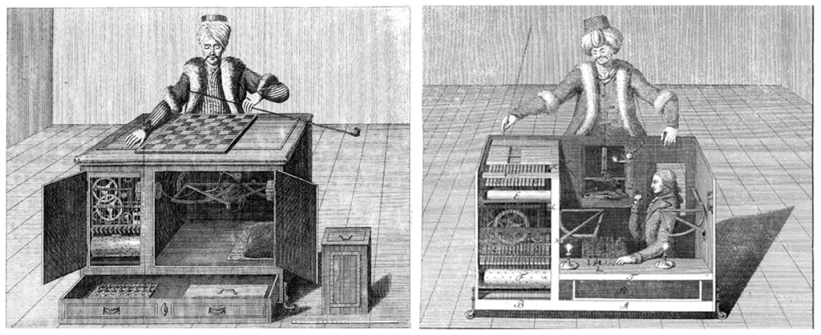Difference between revisions of "History of Artificial Intelligence (AI)"
m |
m |
||
| Line 22: | Line 22: | ||
* [[Archaeology|Using AI to reveal historical mysteries]] | * [[Archaeology|Using AI to reveal historical mysteries]] | ||
* [https://www.technologyreview.com/2023/02/08/1068068/chatgpt-is-everywhere-heres-where-it-came-from/ ChatGPT is everywhere. Here’s where it came from | Will Douglas Heaven - MIT Technology Review] | * [https://www.technologyreview.com/2023/02/08/1068068/chatgpt-is-everywhere-heres-where-it-came-from/ ChatGPT is everywhere. Here’s where it came from | Will Douglas Heaven - MIT Technology Review] | ||
| − | * [https://arxiv.org/abs/2302.09419 A Comprehensive Survey on Pretrained Foundation Models: A History from BERT to ChatGPT | C. Zhou, Q. Li, C. Li, J. Yu, Y. Liu, G. Wang, K. Zhang, C. Ji, Q. Yan, L. He, H. Peng, J. Li, J. Wu, Z. Liu, P. Xie, C. Xiong, J Pei, P. Yu, L. Sun -arXiv] | + | * [https://arxiv.org/abs/2302.09419 A Comprehensive Survey on Pretrained Foundation Models: A History from BERT to ChatGPT | C. Zhou, Q. Li, C. Li, J. Yu, Y. Liu, G. Wang, K. Zhang, C. Ji, Q. Yan, L. He, H. Peng, J. Li, J. Wu, Z. Liu, P. Xie, C. Xiong, J Pei, P. Yu, L. Sun - arXiv - Cornell University] |
Revision as of 06:51, 2 May 2023
YouTube ... Quora ...Google search ...Google News ...Bing News
- Creatives
- Neural Network History
- Gaming
- Turing Test ... test of a machine's ability to exhibit intelligent behavior
- History of Artificial Intelligence ...Timeline ...Timeline of machine learning | Wikipedia
- A (Very) Brief History of Artificial Intelligence | Bruce G. Buchanan
- How China tried and failed to win the AI race: The inside story | Alison Rayome
- Bio-inspired Computing
- Feature Exploration/Learning
- Using AI to reveal historical mysteries
- ChatGPT is everywhere. Here’s where it came from | Will Douglas Heaven - MIT Technology Review
- A Comprehensive Survey on Pretrained Foundation Models: A History from BERT to ChatGPT | C. Zhou, Q. Li, C. Li, J. Yu, Y. Liu, G. Wang, K. Zhang, C. Ji, Q. Yan, L. He, H. Peng, J. Li, J. Wu, Z. Liu, P. Xie, C. Xiong, J Pei, P. Yu, L. Sun - arXiv - Cornell University
Never give up on a dream just because it will take time to accomplish it. The time will pass anyway.
In AI, there are four generations.
- First Generation AI - is the Good Old-fashioned AI, meaning that you handcraft everything and you learn nothing. These were simple programs that could only do one task really well. They were like little robots that were programmed to do a specific thing, like adding numbers or sorting data.
- Second Generation AI - is shallow learning — you handcraft the features and learn a classifier. This was when people started teaching computers how to learn by giving them lots of data and letting them figure out patterns on their own. These programs were called "machine learning" programs, and they could do things like recognize images or translate languages.
- Third Generation AI - is deep learning. Basically you handcraft the algorithm, but you learn the features and you learn the predictions, end to end. This is when computers started to get really good at things that only humans used to be able to do, like understanding language and making decisions based on what they know. These programs are called "neural networks" because they're modeled after the way our brains work.
- Fourth Generation AI - This is the most advanced kind of AI we have so far - “learning-to-learn.”. These programs can understand things like emotions and creativity. They can learn from experience and get better at things over time, just like we do. They're often called "artificial general intelligence" because they're almost as good as humans at thinking and learning.
|
|
|
|
|
|
|
|
|
|
|
|
|
|
The Turk

|